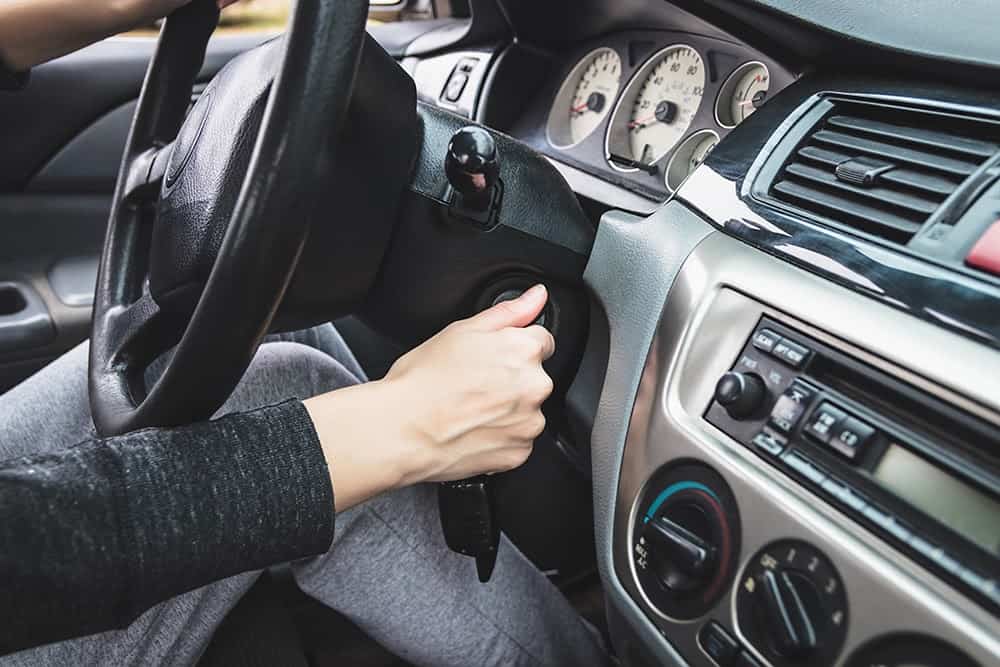How A Key Gets Stuck In The Ignition and What This Means for You
January 4, 2021

Cars are our main mode of transportation, which makes it that much more stressful when something is wrong with our precious vehicles. This is particularly true when you run into a problem, such as your key getting stuck in the ignition, and don’t know who to call, let alone how to fix it yourself.
Oftentimes, especially when you’re in a hurry, it’s very easy to miss crucial steps to turn your car off. Many automatic transmission vehicles come with a safety feature that prevents the driver from removing the key from the ignition when the car is not in
park or neutral
. Before trying anything else, make sure to
check that your shifter is in one of these two positions
.
Another reason your key might be stuck in the ignition is because you did not properly turn the car itself off. In order to turn the vehicle off, the key must be turned all the way into the lock position (in most cars, this means all the way down). If your key is not coming out of the ignition, try
turning the car on again and turning it off properly
before attempting to forcefully yank the key out.
Once you have ascertained that your car is in the proper gear, it’s time to move onto the next reason why your key may be stuck: dirt, dust, or other particles blocking your key from being removed from the keyhole. It is very possible that debris has gotten into the keyhole, but it is not something to worry about. To get your key out, you have 3 options:
- Spray WD40 into the keyhole to loosen up the dirt that may be obstructing the hole.
- Gently wiggle the key back and forth , which should also loosen up any debris that may be blocking the keyway.
- Call a locksmith for professional help if neither of the above options are possible or working.
If your key is stuck in the ignition and you find that your car’s steering wheel is also locked in place, it is possible that you have inserted the wrong key. Locking the steering wheel is a safety feature on most vehicles that is present in case the incorrect key is inserted. Fixing this is the simple process of turning the steering wheel slowly to the left and then to the right while applying slight pressure to the key. Once you have enough pressure, you should be able to unlock the steering wheel and remove the key from the slot.
The worst case scenario in a situation like this is that your key has broken, causing it to be stuck in the ignition. This may happen more often with duplicate keys, as they are weaker than the originals. You have two options when it comes to a broken key:
- Use a key extractor tool and attempt to remove the piece of broken key that is stuck in the keyway. If this tool is not available to you in the moment, or if this solution is not working, your best option is to:
- Call a locksmith . Having an experienced, professional set of hands on the job will be the best bet for you if the key breaks off inside the ignition.
Additionally, it is always important to pay attention to the general state of your car key before putting it into the ignition. If the key already looks damaged, prone to damage, or is flimsy in any way, it has a higher chance of breaking off inside of the ignition.
A final reason why you may not be able to remove the key from the ignition is a dead car battery. The fix for this is fairly simple: to check if your battery is in fact dead, try turning on your headlights or turn signals. If these are not working, your car battery is most likely dead. Once you have ascertained that this is the case, simply jump-starting your car will allow you to remove the key from the ignition keyway.
Though having a key lodged in the ignition is not an ideal situation, it is important to remember that there is always someone or something out there that can help you. Whether it be a friend jump-starting your car for you, a key extractor tool, or WD40, you will find a way out of this situation. And if you find yourself needing extra help, Brothers Locksmith trusted, certified locksmiths are here for you and ready to do so.
Call Us Any Time!
Wondering if you should change your locks after a cleaner or repairman visits? Learn when rekeying is necessary, security risks to watch for, and expert guidance from Brothers Locksmith.
Worried your home may be targeted for a break-in? Learn the top warning signs burglars look for, how to spot suspicious activity early, and smart ways to secure your property. Get expert tips from professional locksmiths to stay protected before trouble happens.







